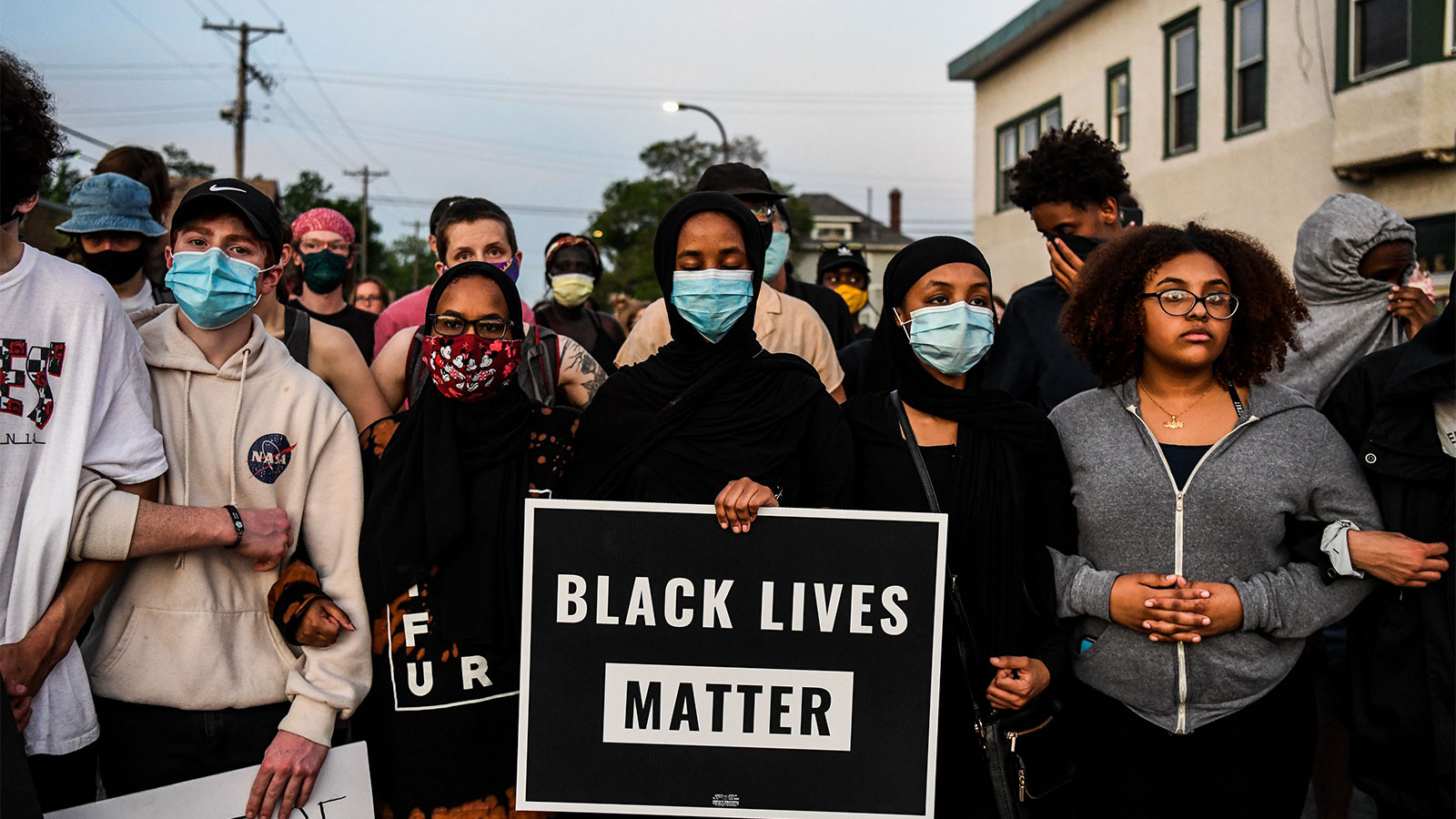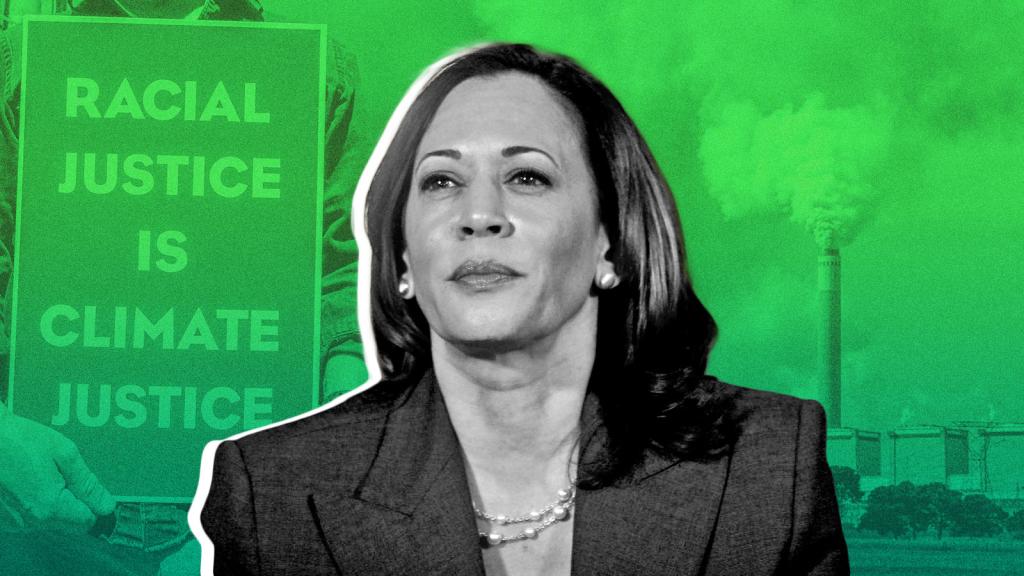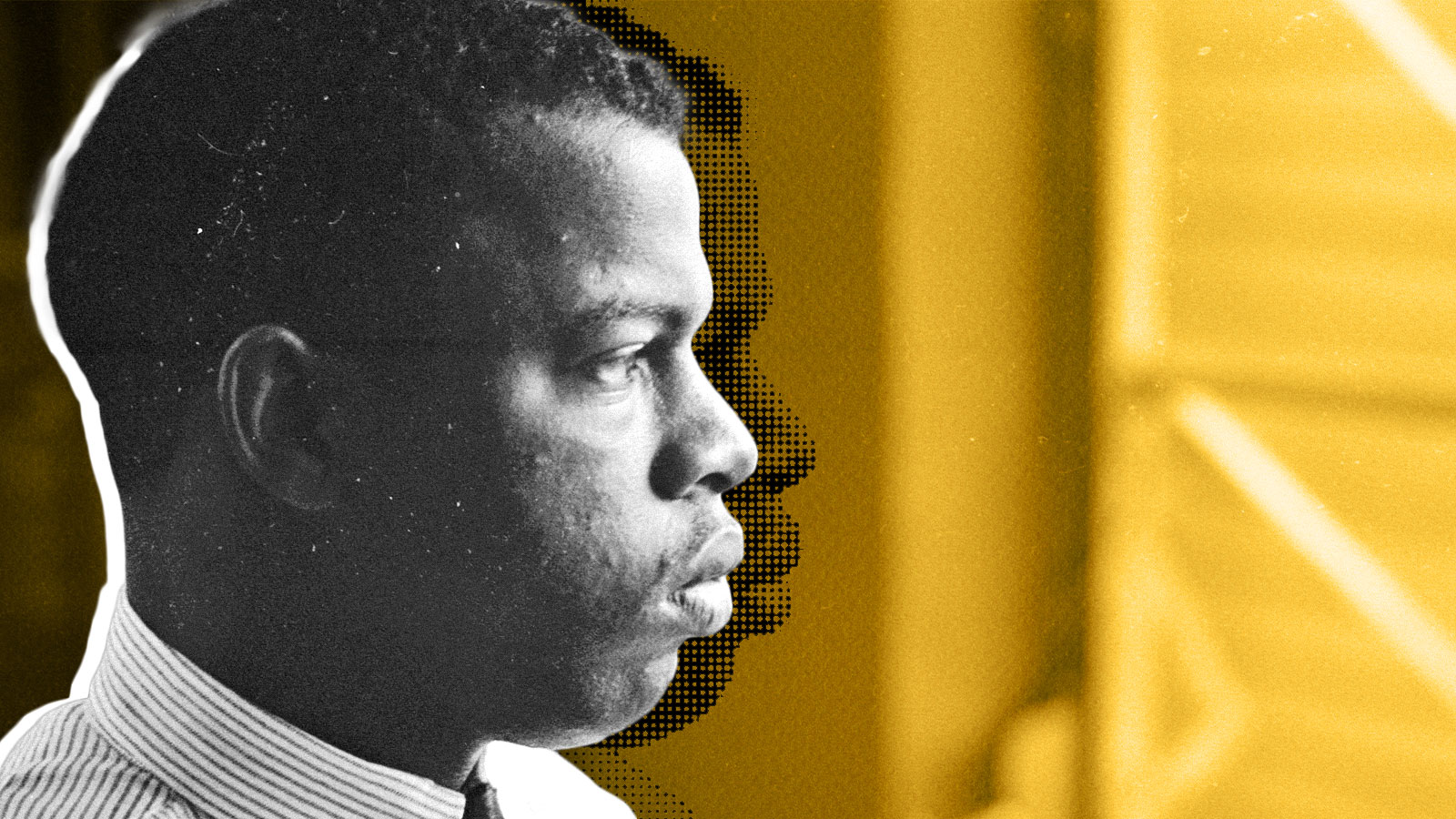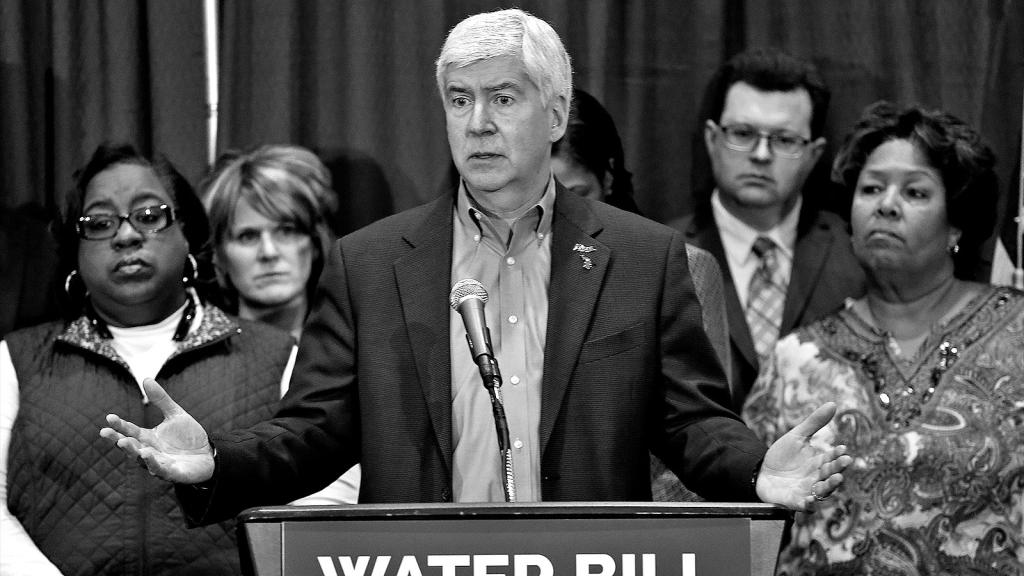In the two months since George Floyd’s death at the hands of police, Americans have marched, protested, rallied, and spoken out about the need for systemic change. It’s the type of activism that the late U.S. Representative John Lewis, a key figure in the civil rights movement who died last month of pancreatic cancer, described as “good trouble.” Lewis sensed that this time — with the massive scale, global impact, and inclusivity of the Black Lives Matter movement — we are on the precipice of change.
“There will be no turning back,” he told CBS This Morning in June. What Lewis understood, having marched down the road for justice himself, was that it’s long past time for the United States to fulfill the promise of equal protection pledged in our constitution. As a young man, Lewis put his life on the line to challenge a system that today continues to penalize, prosecute, and strip away the civil rights of so many Black and brown Americans. “We are tired. We are tired of being beat by policemen. We are tired of seeing our people locked up in jail over and over again,” Lewis said in 1963 as he stood on the steps of Lincoln Memorial during the March on Washington.
That is why, even after the initial fires of protest were extinguished in Minneapolis, the embers of discontent continued to burn as residents voiced their anger over their city’s failure to address police misconduct. The racial disparities in arrests paint a stark picture: One 2015 analysis by the American Civil Liberties Union found that Minneapolis police arrested African Americans and Native Americans for low-level offenses at rates almost nine times higher than the rate for whites over a three-year period. The city’s response in the past was never enough to truly reform policing or implement the type of systemic change that could address health and wealth inequities for people of color. As former mayor Betsy Hodges wrote in a recent first-person account, the city’s white liberals have resisted systemic change for decades. Instead of doing the hard work of reforming zoning laws, addressing the lack of housing affordability, and providing for under-resourced schools, they put a Band-Aid on the city’s problems by, for example, funding a rental assistance hotline and summer job programs for youth of color.
“These efforts make us feel better about racism, but fundamentally change little for the communities of color whose disadvantages often come from the hoarding of advantage by mostly white neighborhoods,” wrote Hodges.
Today, we’re witnessing the tragic consequences of inaction for communities that have long been burdened by pollution and contamination and are now hardest hit by COVID-19. “Everything in our health is determined by our environment,” Linda Birnbaum, the former director of the National Institutes for Environmental Health Sciences and the National Toxicology Program, told the Intercept. Researchers are finding that many adults who are infected with COVID-19 are suffering the long-term effects of the environmental health damage they experienced as children, such as lead exposure and asthma.
In response to this health crisis, the newly-formed Title VI Environmental Justice Alliance, a coalition of environmental justice groups and their allies, issued a call to action in July to address the inequities that are exacerbating the spread of COVID-19 in communities across the country. The alliance has set out to address the systemic racism that has created these inequities by advocating for the ability of communities to challenge race discrimination in environmental decision-making under the Civil Rights Act, as well as the racially disparate effects of public policy decisions that lead communities of color to face greater exposure to environmental harms.
It’s not a coincidence that race is the most salient factor explaining the location of hazardous waste sites and the worst polluters, says attorney Marianne Engelman Lado, an author of the call to action, member of the alliance, and expert on the effects of environmental contamination on vulnerable populations. Baked-in patterns of segregation have led to inequalities in environmental exposure, which are determined by the resources and the political power a community has to fight the siting of industrial facilities, as well as zoning and land-use decisions.
“We have to start recognizing that all people have the right to equal protection, and we have to address these disparities in exposure to environmental hazards,” said Engelman Lado. “That means changing the way we do environmental decision-making: where we place things, and who has a say, and whether we listen to communities.”
Addressing environmental disparities in neighborhoods where residents struggle to breathe due to pollution and contamination will also mean reckoning with the toxic environments created by other forms of oppression, such as police violence. The links between the two are undeniable, according to Angelo Logan, the campaign director of the Moving Forward Network in Los Angeles, which works to protect disadvantaged communities from the adverse effects of the global freight transportation system. He knows firsthand that the most vulnerable communities often endure a deadly combination of poverty, police oppression, and pollution.
“In both cases you’re physically choked,” Logan said, “by air pollution and by [law enforcement], whoever that might be.”
For this reason, part of the dialogue around addressing the flaws in the criminal justice system should involve asking broader questions, such as: What can be done to prevent brown and Black men from landing in the criminal justice system to begin with? Some of the answers to that question lie quite literally in the ecological environment in which they are growing up. To get to the root of injustices facing communities of color, we must dig even deeper, by addressing the legacy of lead contamination in America’s cities in a comprehensive way. More specifically, we can begin by remediating contaminated soil in residential neighborhoods that were historically segregated and industrialized in the 20th century. Many believe that lead contamination in soil was addressed decades ago, but this invisible neurotoxin continues to be a threat in urban environments because it can take decades, if not longer, for lead to degrade in soil. Further, if municipal leaders fail to identify these hidden hazards in American cities and remove that threat of lead exposure, it puts the health of children and adults living in these polluted neighborhoods at risk for generations. In the 1980s, Howard Mielke, an urban geochemistry and health expert, did comprehensive soil testing across Minneapolis and provided ample evidence of the dangers facing residents in the city’s urban center, as well as a roadmap of potential solutions. The question is: Did Minneapolis clean up its polluted environment?
On one hand, the state of Minnesota was a leader in convincing Congress that lead poisoning was a major problem across American cities, and that lead needed to be removed from gasoline. It was thanks to the testimony of a Minnesota delegation, which included Mielke, during a 1984 U.S. Senate committee hearing that Congress ultimately decided to phase out gasoline sooner than its projected 1988 target. But the phase-out of leaded gasoline was just the first step. It’s the contamination left behind that must still be reckoned with. As Clair C. Patterson, the late California Institute of Technology geochemist who decades ago broke new ground on lead’s impact, once said: “Sometime in the near future it probably will be shown that the older urban areas of the United States have been rendered more or less uninhabitable by the millions of tons of poisonous industrial lead residues that have accumulated in cities during the past century.”

CHANDAN KHANNA / AFP via Getty Images
Minneapolis, despite its progressive reputation, is a deeply divided city geographically when it comes to race. Any discussion around how to address the implications of lead exposure requires an examination of how the city’s neighborhoods were developed in the 20th century. Today, we have evidence that shows that housing segregation —via racially restrictive housing covenants — influenced the formation of poor communities of color near industrial zones and freeways that were built through historic African American communities. These same freeways were conduits for leaded gasoline emissions that settled into the surrounding neighborhoods.
The ‘separate-but-equal’ era of injustice that galvanized a young John Lewis to take a stand paralleled America’s highway construction boom and the exponential growth of leaded gasoline use in cars. This spread the deadly neurotoxin at levels not seen before. Mielke, who teaches in the department of pharmacology at Tulane University’s School of Medicine, has spent more than four decades investigating the dangers of lead contamination in soil across the country, including in Baltimore, where he researched his first lead soil study, and New Orleans, where he’s currently based and has geographically mapped lead soil levels and investigated lead’s impact on children’s health and education.
Mielke has found that decades of contamination from leaded gasoline, lead-based paint, industrial emissions, and other sources has created invisible mountains of lead in America’s urban city centers that continue to harm children. “We’ve reached a point where [childhood blood lead levels] have come down enormously, but not evenly for the whole community…. It’s still in the environment, and it’s still exposing children at unacceptably high levels,” said Mielke, a Minnesota native.
Mielke, other lead soil experts, and citizen-scientists have tested and mapped lead levels across America, so we’ve known for decades how extensive the lead contamination is in our soil: from Baltimore to Los Angeles, Cleveland to Chicago, Oakland to Indianapolis. But what has been done to address this environmental threat in American backyards? For the most part, not nearly enough to stop children from being exposed, says Mielke.
“[Municipalities] seem to run away from it. Either they don’t want to talk about it, they don’t want to face it, or they look at it as an issue that they can’t possibly do anything about — that it’s way too expensive,” said Mielke. In New Orleans, Mielke has diligently worked to show government officials and the public that there are low-cost solutions — such as covering contaminated soil with geotextile, cleaner dirt, and vegetation — to prevent more children from being exposed in childcare centers and parks. Mielke’s Baltimore lead research in the late 1970s and early 1980s first opened his eyes to the “awful problem” of lead-contaminated soil, but it was his subsequent mapping in Minnesota’s Twin Cities that led him to realize that America faced an extensive problem in its urban centers. It became his mission to do something about it.
“Generation after generation living in the same place in the city — they’re running into the same problems. And that can be resolved, but it takes concerted effort,” said Mielke.
Today we know that even low-level lead exposure (blood lead concentrations below 5 micrograms per deciliter) affect not only a child’s intellectual and academic abilities — they are also a risk factor for higher rates of neurobehavioral disorders such as attention deficit hyperactivity disorder (ADHD). A growing body of research also suggests that youth who have been exposed to lead run a higher risk of ending up in the criminal justice system. One 2008 University of Cincinnati study tracked 250 individuals and found that, when Cincinnati children reached adulthood, there was a strong relationship between their participation in criminalized activity and their exposure to lead in the womb, as well as their childhood exposure to lead. A 2017 study from the National Bureau of Economic Research found that suspensions and juvenile detentions rise with preschool blood lead levels. The study found that African American and Latino lead-burdened children were more likely to be suspended or detained in juvenile hall than their white counterparts. Historically, childhood lead exposure has disproportionately impacted Black and Latino children across the country, and one 2020 study found that a significant nationwide racial disparity in blood lead outcomes persists today for African American children, even after adjusting for risk factors and variables.
Harvard sociologist Robert Sampson has studied the relationship between neighborhood, lead toxicity, and racial segregation to understand the role of lead contamination as a source of environmental inequality in Chicago neighborhoods. His research has shown that lead toxicity, as shown through high blood lead levels among children, is closely linked to racial and ethnic segregation. As such, it has contributed to the legacy of Black disadvantage in the United States. It’s what Sampson calls the “ecology of toxic inequality,” and it aligns with the links researchers have found between racial segregation, enviromental hazards, and poor health outcomes. Because lead exposure is concentrated in certain neighborhoods, Sampson also found in a 2018 study that lead exposure has a neighborhood effect — much like inadequate housing, poverty, and violence — that contributes to the reproduction of inequality over a person’s lifetime.
The urgency to address lead contamination has been clear since the 1920s, when health experts cautioned the U.S. government about the dangers of putting lead in gasoline. In the 1960s, grassroots advocates in New York, Chicago, Boston, Oakland, and Baltimore called on government agencies to address the lead hazards in public housing. Their voices and advocacy reduced the impact of the toxin, but the lead problem never disappeared. And in the long run, the economic cost of inaction has been enormous. In 2002, researchers found that, even at low levels of lead exposure, the costs associated with direct medical care and potential productivity losses for lead-burdened U.S. children when they become adults amounts to $43 billion annually.
This urgency should be felt anew today. Then-President Barack Obama once described John Lewis as “an American who knew that change could not wait for some other person or some other time, whose life is a lesson in the fierce urgency of now.” Lewis may be gone, but his life, his actions, and his words are a reminder of the moral courage and political will that’s required to address systemic disparities. He grew up in the cotton fields of Alabama as the son of sharecroppers, and he attended segregated public schools. In a moving CBS This Morning video where Lewis writes a letter to his young self, he describes how the activism of Rosa Parks and the words of Martin Luther King Jr. inspired him to join the civil rights movement. “When you see something that is not right, not fair, not just, you have a moral obligation to continue to speak up, to speak out,” he said in the video. He looked back on his life and it brought him to tears, because he understood exactly what it took to overcome systemic racism.
“Sometimes I feel like crying — tears of happiness, tears of joy to see the distance we’ve come,” he said. He also knew how much further we had to go on that road to justice. So he spent his life fighting these battles in the halls of Congress, reminding us to persevere, to “get out there and push and pull until we redeem the soul of America.”



